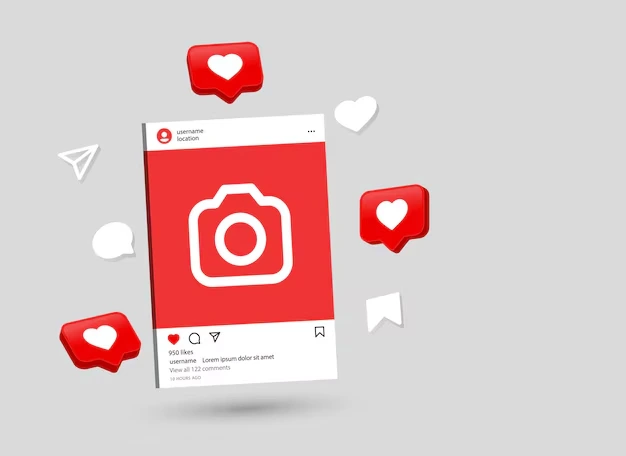Instagram has solidified its position as a powerhouse in advertising, boasting over a billion active users and offering businesses an unparalleled opportunity to connect with vast audiences. For marketers and business owners, it’s a goldmine for reaching targeted demographics—but the burning question remains: How much does it cost to run ads on Instagram? The answer isn’t straightforward, as pricing hinges on multiple variables like audience targeting, competition, ad quality, and campaign goals.
In this comprehensive guide, we’ll break down everything you need about Instagram advertising costs as of March 26, 2025. Whether you’re a small business owner dipping your toes into social media marketing or a seasoned marketer refining your strategy, this article will equip you with the insights to budget effectively and maximize your return on investment (ROI).
Why Instagram Ads Matter for Businesses
Instagram’s evolution into an advertising giant is no accident. Its visually driven platform, diverse ad formats, and integration with Facebook’s robust Ads Manager make it a dream tool for brands. The platform leverages user data to deliver highly targeted campaigns, while its algorithm prioritizes engaging, relevant content. High-quality visuals—think stunning images and captivating videos—are key to grabbing attention and driving results.
But success doesn’t come cheap. Understanding the cost structure and how to optimize your ad spend is critical to making Instagram work for your business. Let’s dive into the details.
Types of Instagram Ads and How Much Does It Cost To Run Ads On Instagram?
Instagram offers a variety of ad formats, each tailored to different marketing objectives. Costs vary based on placement, engagement potential, and competition. Here’s a breakdown of the most popular options:
1. Stories Ads
- What They Are: Full-screen, immersive ads that appear between users’ Stories.
- Why They Work: With over 500 million daily Stories users, these ads capture attention in a fast-paced, interactive format.
- Cost Factors: Pricing depends on your target audience, creative quality, and competition. High-quality visuals and compelling calls-to-action (CTAs) often yield better performance, potentially lowering costs per engagement.
- Average Cost: Typically ranges from $0.70 to $1.50 per click (CPC) or $5 to $8 per thousand impressions (CPM), though this can spike in competitive niches.
2. Feed Ads
- What They Are: Ads seamlessly integrated into users’ feeds, blending with organic posts.
- Why They Work: Their native feel drives higher engagement, as they don’t disrupt the user experience.
- Cost Factors: Costs vary based on targeting precision and ad quality. A well-designed ad with strong visuals can reduce expenses by boosting relevance scores.
- Average Cost: CPC hovers between $0.50 and $2, while CPM ranges from $6 to $10, depending on market demand.
3. Explore Ads
- What They Are: Ads displayed on the Explore page, where users discover new content.
- Why They Work: Perfect for brand awareness, these reach users in a discovery mindset.
- Cost Factors: Pricing reflects audience size, competition, and engagement rates. Less saturated than Stories or Feed, Explore can sometimes offer a cost-effective option.
- Average Cost: CPC ranges from $0.60 to $1.80, with CPM between $4 and $9.
Note: Costs fluctuate based on real-time bidding, seasonality (e.g., holidays like Black Friday), and industry competition. For example, fashion and tech niches often see higher rates due to heavy advertiser presence.
What Drives Instagram Ad Costs?
Lets Undersatnd How Much Does It Cost To Run Ads On Instagram?Instagram ad pricing isn’t a one-size-fits-all model—it’s a dynamic system influenced by several key factors. Here’s what you need to know:
1. Target Audience
- Impact: The more specific or in-demand your audience (e.g., 18-34-year-olds in urban areas with luxury interests), the higher the cost. Niche markets with limited reach can also drive up prices.
- Tip: Broaden your audience slightly to reduce costs, then refine based on performance data.
2. Ad Placement and Timing
- Impact: Ads in premium spots (like Stories during peak hours) cost more due to visibility. Peak times—weekends or evenings—see increased competition, pushing prices up.
- Tip: Experiment with off-peak schedules to lower costs without sacrificing reach.
3. Bidding Strategy
- Impact: Instagram offers automatic bidding (letting the algorithm optimize for you) or manual bidding (setting your own limits). Manual bids give more control but require expertise to balance cost and performance.
- Tip: Start with automatic bidding to establish a baseline, then switch to manual for fine-tuning.
4. Ad Quality and Relevance
- Impact: Instagram rewards high-quality, engaging ads with lower costs. A strong relevance score (based on user interaction) can reduce your CPC or CPM.
- Tip: Invest in professional visuals and test multiple CTAs to boost engagement.
5. Campaign Objectives
- Impact: Costs vary by goal—brand awareness (impressions) is typically cheaper than conversions (clicks or sales). Video ads or carousels may cost more but deliver higher engagement.
- Align your format with your objective to optimize spending.
Average Costs: CPC vs. CPM Explained
To plan your budget, you’ll need to understand two core metrics:
Cost Per Click (CPC)
- Definition: The price you pay each time someone clicks your ad.
- Best For: Campaigns driving traffic or conversions.
- Average Range: $0.50 to $2, though competitive industries (e.g., e-commerce during Q4) can exceed $3.
- Example: A $100 budget at $1 CPC delivers 100 clicks.
Cost Per Mille (CPM)
- Definition: The cost per 1,000 impressions (views), regardless of clicks.
- Best For: Brand awareness campaigns.
- Average Range: $5 to $10, with spikes during high-traffic periods.
- Example: A $50 budget at $5 CPM reaches 10,000 users.
CPC is ideal for action-oriented goals, while CPM suits visibility-focused campaigns. Track both to measure ROI effectively.
Setting a Realistic Instagram Ad Budget
How Much Does It Cost To Run Ads On Instagram? So, creating a budget that works requires strategy. Here’s how to get started:
- Define Your Goals: Are you aiming for brand exposure, website visits, or sales? Each goal influences your spend.
- Estimate Audience Size: Larger audiences require bigger budgets, but hyper-targeting can optimize smaller spends.
- Start Small: Test with $10–$20 daily to gauge performance, then scale up based on results.
- Monitor and Adjust: Use Instagram Insights to track metrics like reach, clicks, and conversions, tweaking your budget as needed.
Example Budget: A small business might allocate $300 monthly ($10/day) for a local campaign, while a national brand could spend $5,000+ targeting broader demographics.
Maximizing Your Instagram Ad Spend
Getting the most bang for your buck means optimizing every aspect of your campaign. Here’s how:
1. A/B Testing
- Test variables like images, captions, and CTAs to find what resonates. For instance, does a carousel outperform a single image? Data will tell you.
2. Leverage Instagram Insights
- Dive into metrics—impressions, engagement, click-through rates—to refine targeting and content. If an ad’s underperforming, pivot quickly.
3. Prioritize Creative Quality
- Stunning visuals and concise messaging are non-negotiable. Use tools like Canva or hire a designer to stand out.
4. Time Your Campaigns
- Launch ads during low-competition windows (e.g., midweek mornings) to stretch your budget further.
Case Study: A clothing brand running a $500 Stories Ad campaign with A/B-tested visuals saw a 40% CPC reduction ($1.20 to $0.72) after optimizing for engagement.
Final Thoughts: Making Instagram Ads Work for You
Running ads on Instagram in 2025 is both an art and a science. Costs can range from a few cents per click to double-digit CPMs, depending on your strategy and execution. The key to success lies in understanding your audience, crafting compelling creatives, and relentlessly optimizing based on data.
Start small, experiment boldly, and scale smartly. With the right approach, Instagram’s advertising platform can deliver impressive ROI—whether you’re a startup or a global brand. Ready to take the plunge? Your next big win could be just one ad away.
Need Help? Companies like Wildnet Technologies, a leading digital marketing firm in India, have helped over 4,100 clients boost engagement by 150% and generate $10M+ in revenue through expert Social Media Services. Consider partnering with pros to supercharge your Instagram game!
Read More
- What is a paid partnership on Instagram?
- How To Generate Leads From Instagram?
- How to increase story time on Instagram?
- How to Run Effective Paid Instagram Ads: Best Practices and Tips
- Trending Creator Tools for Instagram and Facebook
- Business Bio for Instagram: Key Points to Remember
- How to Delete Facebook Pages: A Complete Guide 2025
Faq
Q. What is the minimum budget to spend on ads on Instagram?
Ans. Instagram ads can be as low as $1 per day for some of the objectives, but the campaign’s performance is usually driven by the budget and the targeting options you have set.
Q. What are the factors that determine the cost of ads on Instagram?
Ans. The cost depends on the audience, your goal for the ad, where you want the ad to be displayed, your competitors, and the content you have created for the ad.
Q. How much does it cost to advertise on Instagram? What is the cost per click, or what is the cost per impression?
Ans. The cost per click can be between twenty cents to two dollars, and the cost per thousand impressions can be around five to fifteen dollars, depending on the type of audience and campaign you are running on Instagram.
Q. Are there certain types of businesses that must spend more on Instagram ads?
Ans. Advertising costs can be higher for businesses in competitive industries such as fashion, e-commerce, or real estate as they have the highest competition with other brands or companies compared to those in less competitive niches.
Q. Is it better to advertise on Instagram using a lifetime or daily budget?
Ans. The daily budget has its advantages, which include the daily budget being consistent every day, and disadvantages, including a lifetime budget not being able to stay on target every day but allowing flexible spending when needed.






